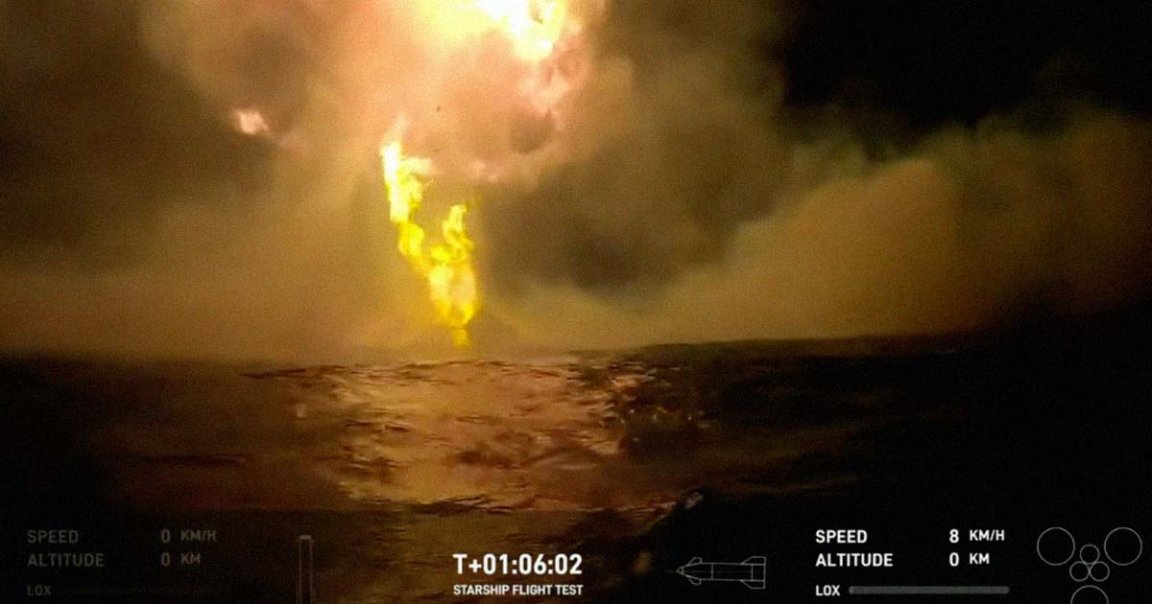
Ocean Explosion
Even up until its very last moments, SpaceX’s fifth orbital test flight of its heavy-lift Starship spacecraft had been a huge success.
First, the company managed to safely catch Starship’s Super Heavy booster using its “Mechazilla” tower, which features two “chopsticks” arms — a baffling feat of engineering.
Even the 165-foot upper stage managed to pull off a textbook flight, taking off early Sunday morning from the company’s test flight facilities in Boca Chica, Texas, and orbiting the Earth for almost an hour.
Pristine Starlink-provided footage showed the spacecraft gently gliding through space, with the Earth spinning below.
Right before touchdown, the spacecraft performed a “belly flop” maneuver to slow its descent even further. Then, it fired its thrusters to right itself and slow its descent over the surface of the ocean.
But seconds later, a presumably remotely operated camera bobbing in the water recorded the spacecraft go up in a massive fireball, a dramatic ending to an otherwise textbook test launch.
“Splashdown confirmed!” SpaceX’s official account tweeted. “Congratulations to the entire SpaceX team on an exciting fifth flight test of Starship!”
Despite the explosion, SpaceX CEO Elon Musk called it a huge win.
“Ship landed precisely on target!” he tweeted. “Second of the two objectives achieved,” he added, likely referring to the company catching the Super Heavy booster.
Next Stop: Mars
Previous test flights haven’t gone nearly as well. The last flight in June saw the massive spacecraft largely survive its descent in tact but helplessly splash down in the ocean. At the time, Starship’s aerodynamic “flaps” were obliterated by the extreme forces involved.
The company’s test flights in 2023 largely ended in massive explosions, forcing the company to reset over many months and deal with the aftermath.
During its latest flight, Starship could be seen slowly being engulfed in plasma as it reentered the Earth’s atmosphere at over 16,000 mph. The spacecraft’s hexagonal heat shield tiles protected it from the extreme temperatures involved. Even the flaps looked far better off this time around compared to the company’s June test flight.
The next flight dubbed Flight 6 has already been greenlit by the Federal Aviation Administration, setting the stage for yet another exciting launch.
Naturally, SpaceX CEO Elon Musk took the opportunity today to reiterate his ambitions to develop a city on Mars with the help of the spacecraft.
“If civilization is reasonably stable for the next ~30 years, a self-sustaining city of a million+ people will be built on Mars,” he tweeted.
More on Starship: SpaceX Just Caught Its Starship Booster With Giant “Chopsticks” Arms